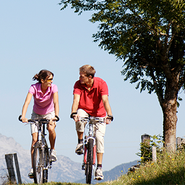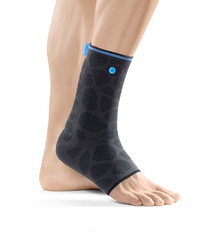Tendons and Ligaments
The purpose of Tendons and Ligaments
Tendons and ligaments on our joints serve to hold up and move the body. Along with bones, muscles and joints, they are part of a human’s supportive and musculoskeletal system. Even though ‘tendons’ and ‘ligaments’ are used interchangeably in everyday language usage, they do have completely different functions within the body: while tendons connectbones withmuscles, we need ligaments to secure and move our joints.
How do Tendons work?
For our technically rigid skeleton to be able to move, the tendons have to transfer the power of the muscles onto our bones. To do this, they connect with the muscle on one end and with the bone on the other. They consist of very stable collagen fibre and are surrounded by protective synovial tissue.
In some places – in our wrists, for instance – the tendons are subjected to higher levels of strain, which is why they’re additionally protected by a tendon sheath. The liquid in the tendon sheath acts like a lubricant to reduce the high friction between tendon and bone. During a movement, the muscle initially contracts and transfers this load to the tendon. Similar to the strings of a puppet, the tendons then transfer the movement to the bone and we are effectively able to lift our leg, for example.
The strongest tendon in our body is the achilles tendon, which can withstand a tensile load of over a ton. If a tendon is strained unilaterally or excessively, it can result in painful inflammations.

How do Ligaments work?
While our tendons’ job is to transfer energy, our ligaments help to stabilise the joints and move our bodies. That’s why ligaments always represent a connection between two bones. They also serve to limit the joints’ scope of our movements to a practical measure. They consist of strands of connective tissue and are not very elastic, which is why ligaments can easily be overstretched or even torn entirely.
Our ankle joint, for example, is stabilised by ligaments both on the inside and outside. However, when exercising or simply tripping over the kerb, the foot can be twisted. The ligaments on our ankle can be damaged if the foot is suddenly twisted – inwards, in most cases – and the ligament cannot withstand the resulting force. This often results in a strained or even torn ligament.
How Muscles, Tendons and Ligaments work together
Our muscles thus cannot move our rigid skeleton by themselves but require tendons and ligaments to do so. In this way, the energy that our muscles produce can be converted into controlled movements and move us forward in our daily lives. It’s only when our muscles, joints, bones, tendons and ligaments work together, that we can walk upright, sit or stand.
The function and purpose of Bones

Strengthening Tendons and Ligaments
To strengthen our tendons and ligaments, it helps to build up the surrounding muscles. The reason for this is that our bodies react to high strain by adapting to it. First, the damage caused by a training stimulus is repaired – stiff muscles are one of the noticeable symptoms after a strenuous workout.
On top of this, our body begins to build up additional muscle elements as a precautionary measure. These work like power plants. If the quantity of muscle elements is increased through targeted training, the muscle becomes more powerful.



